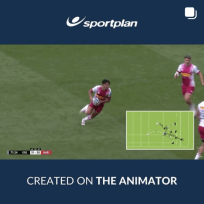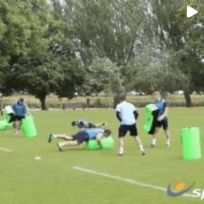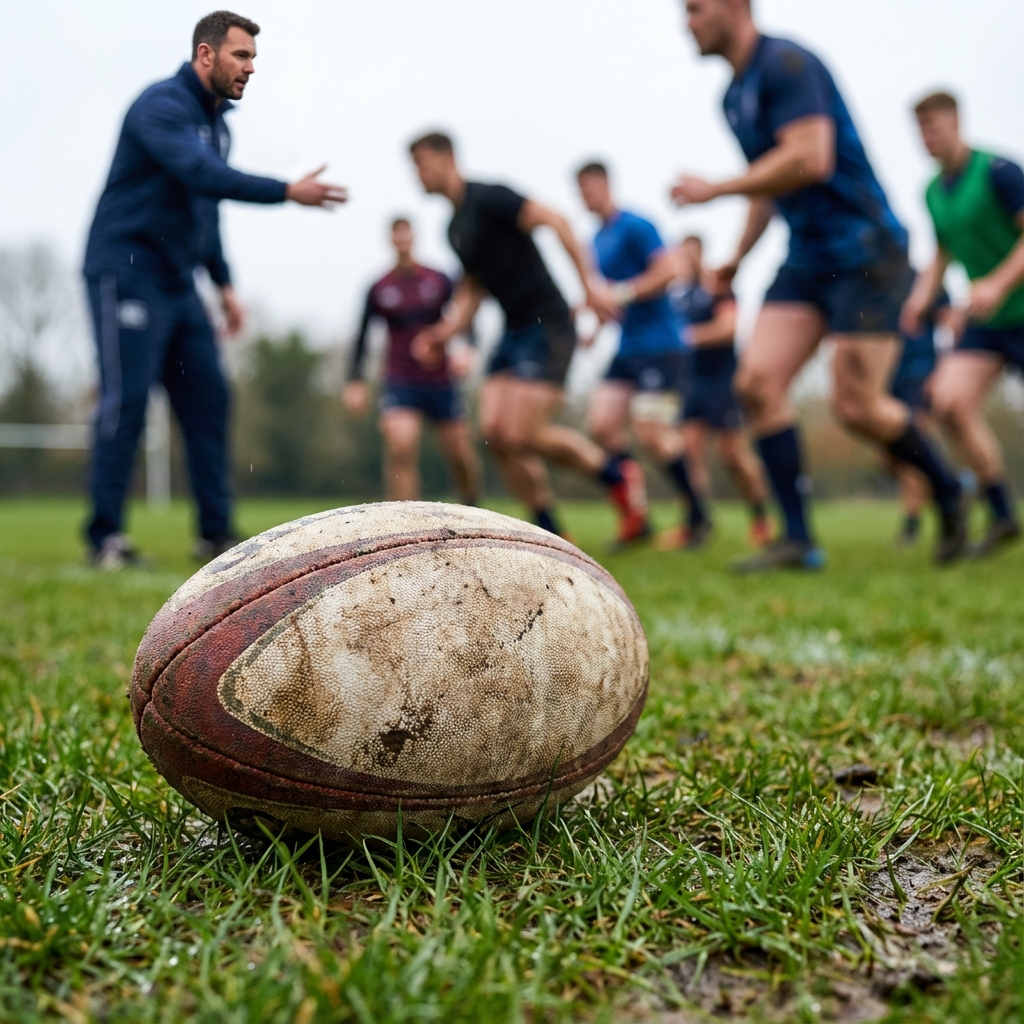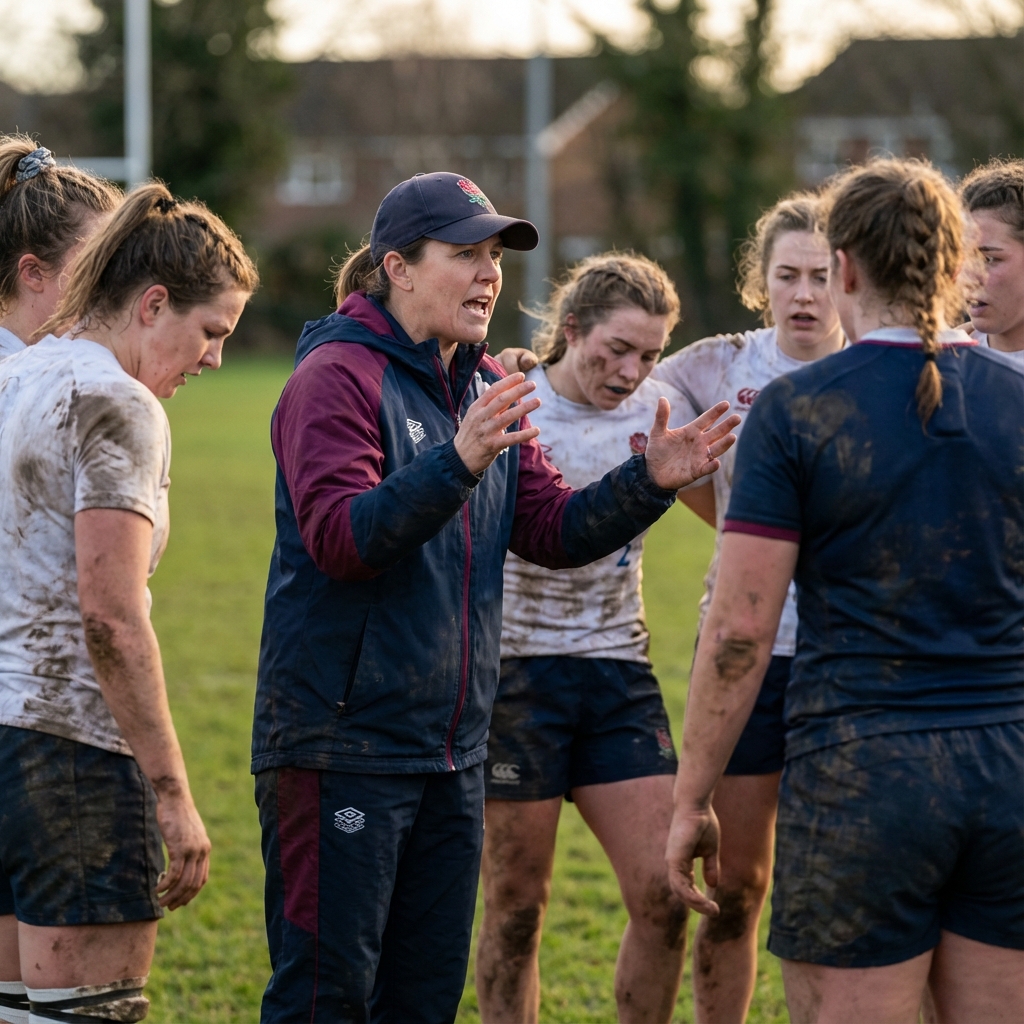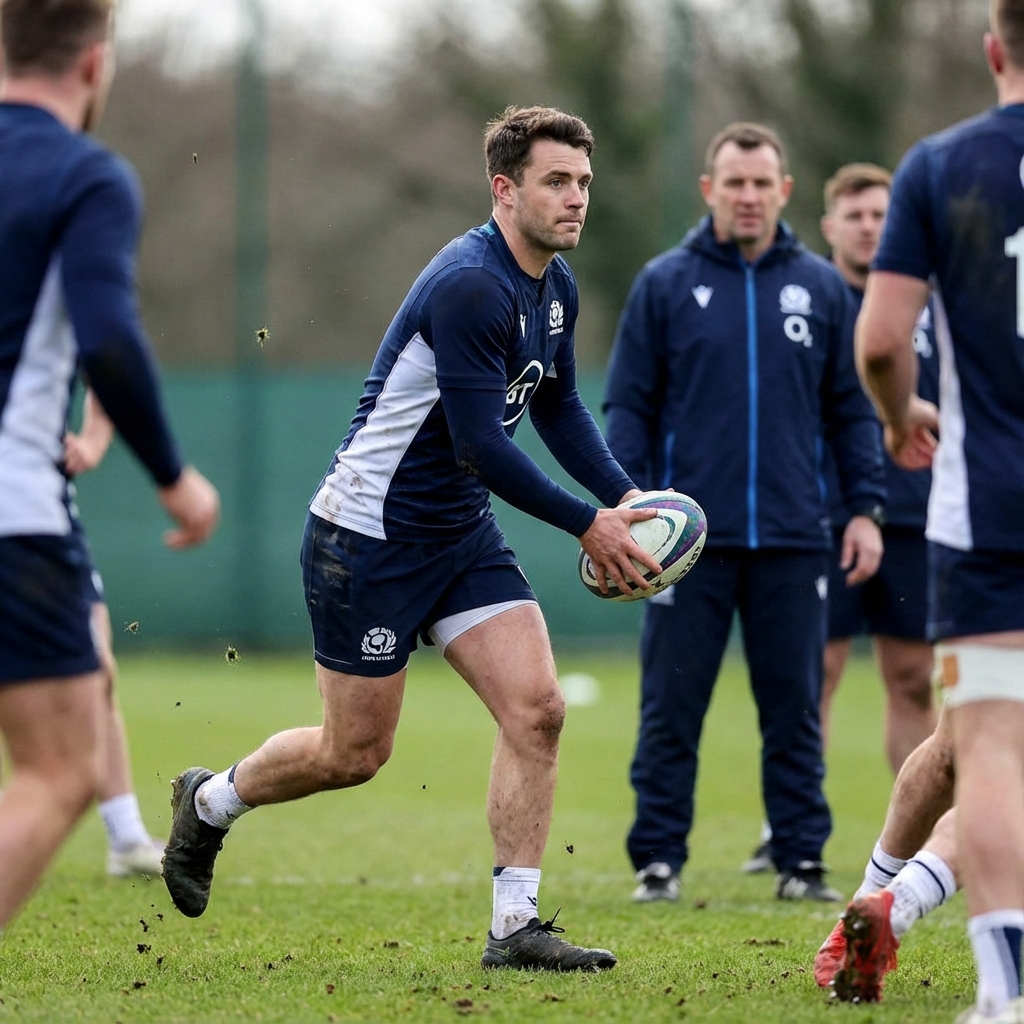Scoring tries - habit?
Why is it important to get players to score the try when completing a handling/running drill?
Great question Tony,
Out of habit i've only ever done it with Tag age up to U10, purely to add a competitive 'i've scored' element to every run up, as a little bit of individual kudos. I used to add a competition for the best try celebration too, a bit soccer I know, but it gives ALL kids their own bit of achievement every time they run up and score.
I stop it at U11 because at this age, I feel the players lose the meaning of it, but gain the importance of scoring a try in real terms i.e. points on the board.
Just my take on it, i'm sure others have different reasons for doing it.
I wonder if it has value in adult training as the pass and catch before scoring ceases to have any special pressure so may be translated to match circumstances. How often the final scoring pass goes astray.
A lot to think about there.
Many practices I've seen given by coaches in the area of pass and catch before scoring is from where they've manipulated a 'man-on' situation with no defender covering the last pass, but we all know from experience playing and watching the game that it is more often than not that the last receiver also has to deal with a defender.
Personally, i've always gone along with putting pressure on the last pass during pass and catch practice. Visual pressure in a 'pass, follow and support' element from the last passers, so the last receiver has to contend with the thought process of where his/her support is coming from and likely to turn up. Also, pressure from a defending player(s) so the last receiver is always having to contend with some kind of pressure. I start the defender from left, then right, then in front, and last but not least...from behind, probably the most important as so many coaches neglect practice in dealing from the defender behind the ball carrier.
As for scoring the try, The ultimate aim of everything we do in training is directed to that moment, so why not let them score it. As I said, I only saw it adding value at a young age, but I guess we have to ally it to everything our players do so its a habit. With that, yes, i'd say it does have value in adult training.
Thanks for that Dennis, a bit akin to visualization? It may help "jigsaw" players - those who fall to pieces in the box.
Tony and Dennis
An interesting discussion you guys have had here!
I agree with you both that scoring a try is an important skill to practise. How often in games do you see a great move completed only for the final ball carrier to drop the ball in the tackle on the line or, even worse, step over the dead ball line?
Do you remember the French winger Christophe Dominici making a fantastic break and then dropping the ball as he went to put it down with one hand against Italy in 2004 in the Six Nations a few years back?
Thanks for contributing to a good discussion.
Simon
Simon, same thing happened to a london Irish player 2 seasons back, more interested in the theatrics of scoring the try than actually placing the ball down.
Watching the England Saxons against Italy A the weekend, James Simpson-Daniel demonstrated how dealing with the last pass should be done, taking a pass on an 'In' line before changing direction and taking an 'Out' line as the last Italian defender had planted his inside foot, taking the pass in his hands rather than chest, dealing with the pressure of the last defender and creating space for him to break the line to score. Great footage to show the team I think!
This season I have had two policies, 1) every drill must result in a try or the successful defence of a try (taken out of bounds/turned over ruck/held up). The drills are almost all game sense style and have a try scoring element. 2) ALL drills are conducted so that the direction of the run is towards the try line. I see many coaches doing training sessions across the rugby pitch when in a game they must run the other way. This means that at all times I can reinforce that they must run at the post and eliminate cross field running. The result has been more straight line running in competition. I guess the underlying principle of athletic training comes to the fore: SPECIFICITY.
Interesting Theo, I guess its a matter of the culture of rugby in the country you're in.
I don't see any problem with training across the pitch, and indeed, I regularly use training across the pitch to highlight an area of the game, we also use across the pitch as a continuous game sense warm up i.e. we start going across between try line and 22, then when try scored the attacking team turn around and attack between try line and 10m, then tryline and half way etc. until we're attacking across the whole length of the field. We also use different shaped playing areas, we may funnel an attack to the left to effect attacking the blindside then open the funnel to attack open right.
In England, i've never found it an issue with players not knowing where to score a try, they know where the try line is, but as I said, pressure to score the try can lead to errors, both forced and unforced, so I find it more effective to put this area under pressure during training so they're used to it come game time.
In many respects exactly my point. last year we struggled to finish the play off. We too change the shape and size of the field to encourage different behaviours; scoring areas that are far apart should increase outside support, or restricting scoring to the centre to encourage inside support, not to mention defense training of different forms of attack. I feel that the players are more motivated to work harder when there is a competitive element. The question is (or was for me) how do I get my players to run straight? And, why are they not running straight? This is one of my solutions, not that it is perfect yet by a long way. I felt that while players knew where to score they were not being efficient in getting there, drifting away from the ball and cutting down the space on the outside. I thought why encourage them any more to run sideways? I must say this is entirely my own theory as far as I know and is more a result of thinking about a problem I have been trying to overcome with the team than some kind of cultural norm in Belgium.
If there's one conclusion that i've come to in my years coaching, that is that there's no right or wrong theory.
I think what I said about culture may've been taken the wrong way. I did comment that it could be a matter of the 'culture of rugby' in the country, not the 'cultural norm' of Belgium. I've been to many countries to coach the game (including Belgium) and the culture IS different. In NZ, if you go to a park and see sports being played, rather than a round football being kicked around, you will see people from kids to adults playing touch rugby all over the place. They play Rugby as a 1st sport in the same way football is played as the 1st sport in most European countries. Their Rugby culture is different to that in the UK, which in turn is different to that in France and so on. I believe this does have an effect on how the game is played at grass roots level. In France you'll see many games being played for practice rather than drills, where in the UK the opposite is more the case, although this is changing.
As for scoring the try, the pressure can be applied wherever you're training. Could be playing touch or TAG on a concrete surface or in a gymnasium, any grass area, not necessarily running towards the post. I really don't have a problem with cross field running, so long as there is a go-forward momentum in play.
Interesting question on running straight. Whenever a player says to me that they "needed to straighten up their running line" my first question(s) is always "run straight? where?". If the opposition are running a quick blitz (out-in defence), there isn't an issue with the backline drifting away from the ball, and if the space on the outside is swallowed up by the carriers drifting, then we can check that by running switch patterns or having players hitting the line from deeper positions. Its about heads up rugby, play what you see, always have options and know what is likely to be the best decision in the circumstances. In defence, if we notice the opposition drifting out in attack, we run a quick rush drift and slide out. If they run straight, we're not so aggressive, but still run a drift pattern with the outside defenders coming up quicker to shut down miss moves. If they run inside lines, then we stand outside them and tackle from the outside.
When I started coaching my sons TAG age group many years back, I heard coaches from all age groups shouting "straighten up", my coaches when I played would shout same thing to us, so I just thought it the 'done' thing to do, then one day I asked one of the players what they thought I meant by "RUN STRAIGHT!". They didn't know, and inevitably, when they did straighten up, they were immediately tagged or tackled, when what they were actually trying to achieve was evasion. Now, all I do is call out "go forward" as a gentle reminder to players.
Maybe the question isn't 'how do you get the players running straight?' but 'why, when and where do you get the players running straight?', leave the 'how?' to the players!
I think that is a great observation, for example running "straight" as in parallel with the touch line probably runs you straight into a defender. The key is a purposeful running line to achieve a goal such a fixing a defender or exploiting a gap. I think some coaches confuse drifting with aimless running. Drifting serves to bring the defence with you, the question then becomes how are you going to use the situation you have created? I am trying to stop my players running sideways (as in not towards the tryline at all) which is unproductive and cuts down space but I do encourage them to run a line that drifts towards the corner with the plan to change the direction of the attack once the defence is moving out. The key point is "why?" and so long as you have a plan and you can execute it, tries will come. For the training principle of always training on the field in the same direction that we play is a little psychology, completely unproven of course but you never know and it can't do any harm. No offence taken in regards to culture by the way.








